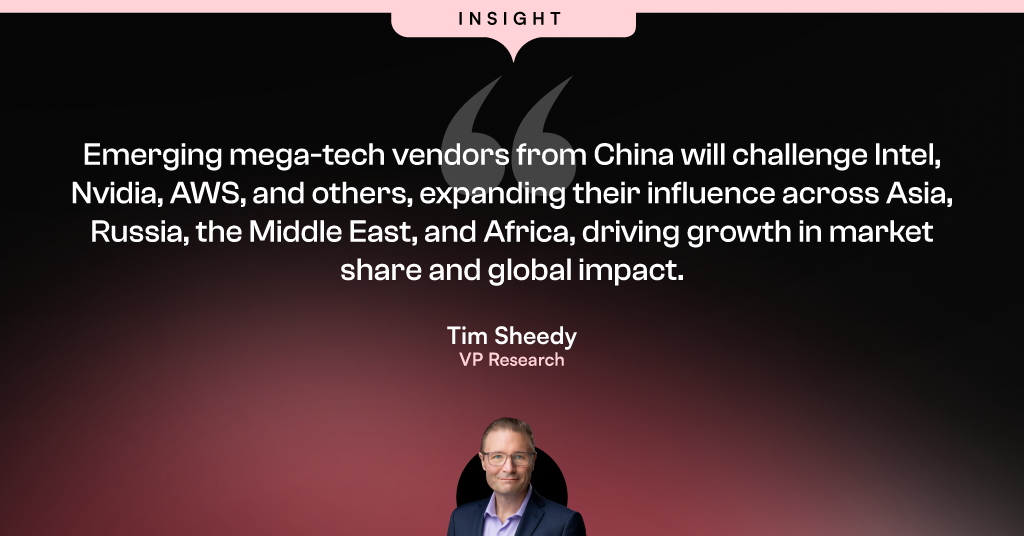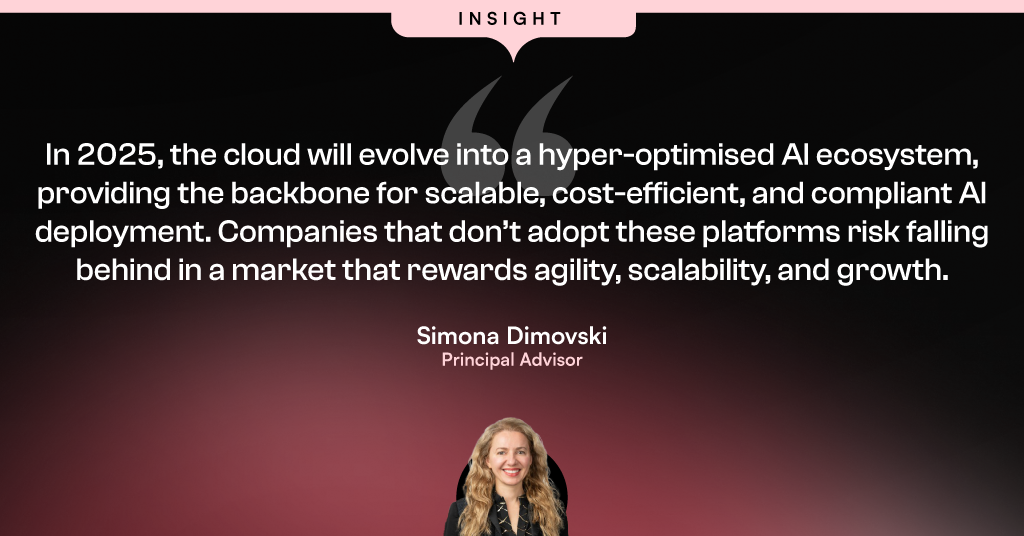
AI is reshaping the tech infrastructure landscape, demanding a fundamental rethinking of organisational infrastructure strategies. Traditional infrastructure, once sufficient, now struggles to keep pace with the immense scale and complexity of AI workloads. To meet these demands, organisations are turning to high-performance computing (HPC) solutions, leveraging powerful GPUs and specialised accelerators to handle the computationally intensive nature of AI algorithms.
Real-time AI applications, from fraud detection to autonomous vehicles, require lightning-fast processing speeds and low latency. This is driving the adoption of high-speed networks and edge computing, enabling data processing closer to the source and reducing response times. AI-driven automation is also streamlining infrastructure management, automating tasks like network provisioning, security monitoring, and capacity planning. This not only reduces operational overhead but also improves efficiency and frees up valuable resources.
Ecosystm analysts Darian Bird, Peter Carr, Simona Dimovski, and Tim Sheedy present the key trends shaping the tech infrastructure market in 2025.
Click here to download ‘Building the AI Future: Top 5 Infra Trends for 2025’ as a PDF
1. The AI Buildout Will Accelerate; China Will Emerge as a Winner
In 2025, the race for AI dominance will intensify, with Nvidia emerging as the big winner despite an impending AI crash. Many over-invested companies will fold, flooding the market with high-quality gear at bargain prices. Meanwhile, surging demand for AI infrastructure – spanning storage, servers, GPUs, networking, and software like observability, hybrid cloud tools, and cybersecurity – will make it a strong year for the tech infrastructure sector.
Ironically, China’s exclusion from US tech deals has spurred its rise as a global tech giant. Forced to develop its own solutions, China is now exporting its technologies to friendly nations worldwide.
By 2025, Chinese chipmakers are expected to rival international peers, with some reaching parity.

2. AI-Optimised Cloud Platforms Will Dominate Infrastructure Investments
AI-optimised cloud platforms will become the go-to infrastructure for organisations, enabling seamless integration of machine learning capabilities, scalable compute power, and efficient deployment tools.
As regulatory demands grow and AI workloads become more complex, these platforms will provide localised, compliant solutions that meet data privacy laws while delivering superior performance.
This shift will allow businesses to overcome the limitations of traditional infrastructure, democratising access to high-performance AI resources and lowering entry barriers for smaller organisations. AI-optimised cloud platforms will drive operational efficiencies, foster innovation, and help businesses maintain compliance, particularly in highly regulated industries.

3. PaaS Architecture, Not Data Cleanup, Will Define AI Success
By 2025, as AI adoption reaches new heights, organisations will face an urgent need for AI-ready data, spurring significant investments in data infrastructure. However, the approach taken will be pivotal.
A stark divide will arise between businesses fixated on isolated data-cleaning initiatives and those embracing a Platform-as-a-Service (PaaS) architecture.
The former will struggle, often unintentionally creating more fragmented systems that increase complexity and cybersecurity risks. While data cleansing is important, focusing exclusively on it without a broader architectural vision leads to diminishing returns. On the other hand, organisations adopting PaaS architectures from the start will gain a distinct advantage through seamless integration, centralised data management, and large-scale automation, all critical for AI.

4. Small Language Models Will Push AI to the Edge
While LLMs have captured most of the headlines, small language models (SLMs) will soon help to drive AI use at the edge. These compact but powerful models are designed to operate efficiently on limited hardware, like AI PCs, wearables, vehicles, and robots. Their small size translates into energy efficiency, making them particularly useful in mobile applications. They also help to mitigate the alarming electricity consumption forecasts that could make widespread AI adoption unsustainable.
Self-contained SMLs can function independently of the cloud, allowing them to perform tasks that require low latency or without Internet access.
Connected machines in factories, warehouses, and other industrial environments will have the benefit of AI without the burden of a continuous link to the cloud.

5. The Impact of AI PCs Will Remain Limited
AI PCs have been a key trend in 2024, with most brands launching AI-enabled laptops. However, enterprise feedback has been tepid as user experiences remain unchanged. Most AI use cases still rely on the public cloud, and applications have yet to be re-architected to fully leverage NPUs. Where optimisation exists, it mainly improves graphics efficiency, not smarter capabilities. Currently, the main benefit is extended battery life, explaining the absence of AI in desktop PCs, which don’t rely on batteries.
The market for AI PCs will grow as organisations and consumers adopt them, creating incentives for developers to re-architect software to leverage NPUs.
This evolution will enable better data access, storage, security, and new user-centric capabilities. However, meaningful AI benefits from these devices are still several years away.

















